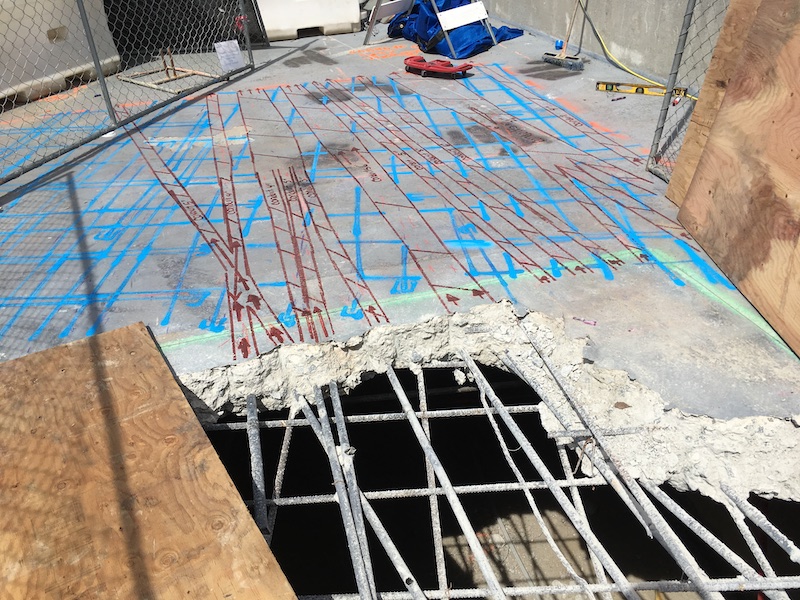Past the Surface Area: Leveraging Advanced Concrete Scanning Techniques for Unmatched Accuracy and Understanding
In the world of building and infrastructure upkeep, the mission for accuracy and thoroughness is never-ending. Advanced concrete scanning strategies have emerged as vital devices in this pursuit, supplying a glance under the surface to reveal a globe of critical insights. By harnessing cutting-edge modern technologies, professionals can reveal anomalies, analyze the condition of concrete frameworks, and make informed choices that shape the program of tasks. The ramifications of these strategies extend far past mere surface-level examinations, promising a depth of precision and understanding that is unmatched.
Significance of Advanced Concrete Scanning
The relevance of making use of advanced concrete scanning strategies depends on the exceptional accuracy they offer for finding sub-surface anomalies and ensuring architectural integrity. By using sophisticated modern technologies such as ground-penetrating radar (GPR), electromagnetic induction, and progressed finder imaging, building and construction specialists can delve below the surface of concrete structures with a level of accuracy that far surpasses standard examination approaches. Concrete Scanning. These strategies enable the identification of covert risks like rebar rust, spaces, channels, or post-tension wires that could endanger the security and safety and security of a framework with time
Moreover, progressed concrete scanning supplies important understandings right into the general condition of a concrete element without the need for invasive measures, minimizing the risk of creating damages during the assessment process. The ability to determine the specific area and depth of potential issues permits targeted repair work and upkeep, inevitably extending the lifespan of the framework and optimizing its performance. In essence, the relevance of sophisticated concrete scanning can not be overstated in the realm of construction and framework upkeep, where accuracy and reliability are critical.
Kinds of Cutting-Edge Technologies

Abnormalities and Flaw Detection

Along with GPR, concrete scanning methods like thermography and impact-echo screening are likewise efficient in spotting anomalies and problems. Thermography uses infrared innovation to determine variants in surface area temperature level, showing possible locations of problem such as delamination or dampness ingress. On the various other hand, impact-echo testing includes examining acoustic actions to identify gaps, splits, and various other flaws within the concrete. By leveraging these innovative techniques, specialists can proactively resolve architectural concerns, making certain the long life and safety and security of concrete frameworks.
Assessing Concrete Problem
How can designers precisely assess the problem of concrete structures to ensure their long life and safety and security? Assessing the concrete problem is a vital element of maintaining framework integrity. Various advanced concrete scanning methods are employed for this objective. Ground-penetrating radar (GPR) is typically made use of to examine the internal structure of concrete, spotting spaces, cracks, this website and other abnormalities that may endanger its strength. Furthermore, impact-echo screening can supply insights into the density and integrity of concrete aspects. Ultrasonic pulse velocity testing is an additional important approach for assessing concrete top quality by measuring the speed of acoustic waves through the product.
In addition, aesthetic inspection stays an essential component of concrete problem assessment. Engineers aesthetically examine the surface for signs of damage, such as spalling, fracturing, or staining. Combining non-destructive testing techniques with visual assessments allows for a comprehensive examination of concrete problem, making it possible for designers to recognize potential issues early and carry out prompt maintenance or repair services. By leveraging these sophisticated methods, engineers can guarantee the long-term sturdiness and security of concrete structures.
Enhancing Decision-Making Procedures
In the world of infrastructure management, maximizing decision-making processes is crucial for guaranteeing the effective upkeep and durability of concrete structures. Boosted decision-making processes in concrete management include utilizing innovative scanning methods to collect comprehensive information on the condition of frameworks. By leveraging innovations such as ground-penetrating radar and 3D imaging, stakeholders can make informed choices pertaining to reinforcement, substitute, or repair work techniques.
These progressed scanning techniques provide very useful insights into the inner composition of concrete, determining possible issues such as spaces, cracks, or rust that might not show up externally. This level of thorough information permits aggressive maintenance planning, decreasing the risk of architectural failings and boosting the total lifespan of concrete structures.
Additionally, by including digital paperwork and analysis tools into the decision-making process, stakeholders can track the development of concrete basics conditions in time, allowing predictive upkeep methods and maximizing source appropriation. Inevitably, the assimilation of innovative concrete scanning strategies boosts decision-making processes by offering unrivaled accuracy, insight, and efficiency in infrastructure monitoring.
Verdict
To conclude, progressed concrete scanning techniques provide unmatched precision and understanding in finding abnormalities, flaws, and examining the condition of concrete frameworks. By leveraging cutting-edge modern technologies, decision-making procedures can be improved, causing more informed and reliable options for keeping and repairing concrete infrastructure. These strategies play a crucial function in guaranteeing the safety and long life of concrete structures, making them a crucial device in the field of building and construction and design.
Moreover, progressed concrete scanning offers important understandings into the overall problem of a concrete element without the demand for invasive actions, lessening the risk of triggering damages during the assessment procedure - Concrete Scanning. Another ingenious technology is 3D X-ray scanning, which supplies comprehensive photos of the internal structure of concrete, offering important their website information without the requirement for devastating screening. In Addition, Concrete Cover Meters are used to determine the density of concrete cover over reinforcement bars accurately. Boosted decision-making processes in concrete administration entail utilizing sophisticated scanning strategies to gather comprehensive information on the condition of frameworks.In verdict, advanced concrete scanning techniques use exceptional precision and understanding in spotting anomalies, problems, and analyzing the problem of concrete structures